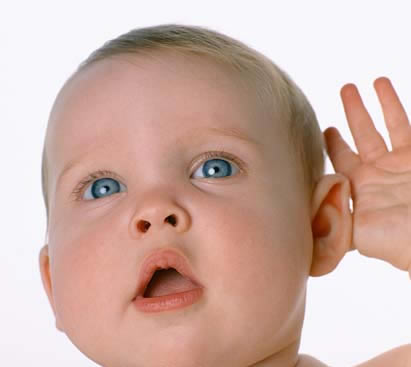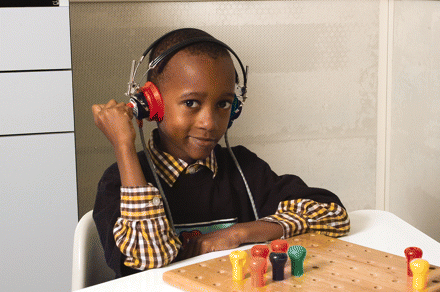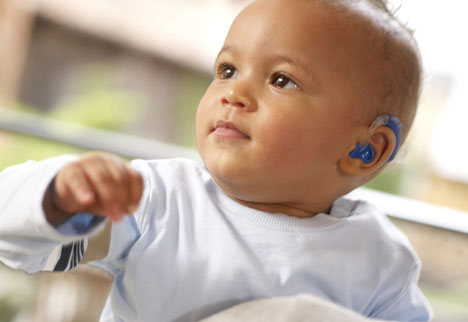Types and Degrees of Hearing Loss
There are three main types of hearing loss: conductive, sensorineural, and mixed. Conductive hearing loss occurs when there is a problem with the outer ear canal, and sound cannot effectively travel to the middle ear. A child with sensorineural hearing loss has damage to the inner ear. Mixed hearing loss is a combination of the two. In order to understand the different types of hearing loss, it is helpful to understand how people actually hear and interpret sounds.
How Does Hearing Work?
There are three different main parts to the ear: the outer, middle, and inner ear. The ear canal and eardrum are parts of the outer ear. Sound hits the eardrum through the ear canal to cause vibrations. Behind that, the middle ear is a space that has three ossicles, which are small bones that vibrate with sound to affect the movement of fluid in the inner ear. When the fluid in the inner ear moves, it affects hair cells, which submit electrical signals to the brain via the auditory nerve. The brain uses these electrical signals to interpret sound.
Conductive Hearing Loss
Conductive hearing loss can often be corrected. People with this type of hearing loss often have trouble hearing faint sounds, or sounds may seem distorted. Conductive hearing loss occurs when something prevents sound from effectively being carried through the outer ear and middle ear to the inner ear.
This may be caused by a variety of physical problems, ranging from benign tumors to impacted earwax. In some cases, allergies may be to blame, or the child might have a buildup of fluid in the middle ear. A foreign object lodged in the ear or an ear infection can also cause it. If your child is a budding Michael Phelps or Ryan Lochte and spends hours in the pool, have him checked for swimmer’s ear. More serious causes can include malformation of the ear structures, a perforated eardrum, or poor function of the Eustachian tube.
Sensorineural Hearing Loss
Sensorineural hearing loss is often permanent. It happens when the inner ear is damaged, or when the nerves from the brain to the inner ear are damaged. In some cases, it is hereditary. Your child might also have sensorineural hearing loss due to an illness, head trauma, or physical deformity of the inner ear. It may be caused by certain drugs. Sensorineural hearing loss may also be acquired by exposure to excessively loud noise.
Mixed Hearing Loss
Mixed hearing loss means that there is damage to the inner ear or nerves, as well as to the outer or middle ear. The causes of mixed hearing loss can include any of the factors that could cause conductive or sensorineural hearing loss.
Degrees of Hearing Loss
The degree of a child’s hearing loss refers to how severe it is. Sometimes, determining the degree of a child’s hearing loss is more difficult than it is for an adult patient. The extent of hearing loss is measured in decibels (dB). Specific ranges of decibels are further classified into mild, moderate, severe, or profound hearing loss. Both the type and degree of your child’s hearing loss will shape his treatment plan, along with the cause of hearing loss. For example, if your child has mild conductive hearing loss caused by impacted earwax, a simple solution is for the pediatrician to remove the earwax. On the other hand, a patient with profound hearing loss may require a cochlear implant.





